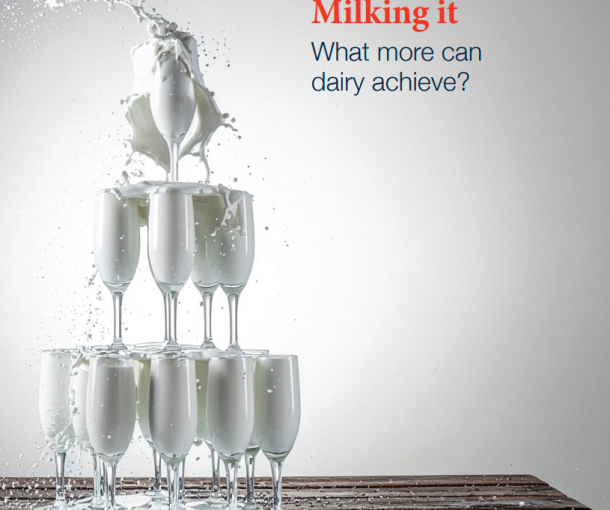Getting inventive about how we make food

Who is to say we won’t live to see a version of Violet Beauregarde’s three-course-dinner chewing gum as ideated by Willy Wonka become a reality, says Dr Victoria Hatton.
I have been very fortunate, six months into a new job, to travel to the United States and Australia to learn, to calibrate my thinking, test ideas and form new ones. I have also built new friendships and new collaborations.
After such a fabulous trip, its important to distil my thoughts, and share those that are relevant so that others can learn from my experience.
There are three key takeaways.
The global food story is evolving. No one would argue that innovation is what led to simple things like scrambled egg becoming a staple in our diets, or the good old sourdough bread that kept us occupied during covid. And who is to argue that Violet Beauregarde’s experience and her three-course-dinner chewing gum ideated by Willy Wonka may not yet become a reality.
Indeed, we have been growing, creating, cooking and selling food for centuries; it is societies’ response to changing circumstances.
While we haven’t stopped innovating in our food system in New Zealand, I think we have become quite single-minded in what our food system looks like. To evolve and keep up with the rest of the world we must become more open-minded to allow our food system to diversify and innovate, and our scientists, farmers, growers and chefs to create new, tasty, nutritious food. Whether it is sourced from the sea, the paddock, the lab, a field, a stainless-steel fermenter or an orchard. Whether it is grown indoors or out, horizontally or vertically, in or out of space.
We need to move away from the desire to debate what we call this new chapter of our food story; it is NOT an alternative story. I think we need to move away from the infatuation we have with protein, it is about more than that. We are emerging into a new period of “food” that we must embrace. One where new food will be “complementary” to our existing food, and I hope, as our food story evolves, that this new food will be mainstreamed into our food choices as soon as possible, as soon as it’s safe to do so.
New Zealand is small. Usually, I would argue that size doesn’t matter but I think when it comes to attracting investment to support innovation, size and scale are everything. Creating new food costs a great deal and margins for those involved in the ecosystem are small. There is no doubt we are world class in our food innovation, research, science and development, and our skills at ideation are second to none, but we struggle to scale efficiently and cost effectively beyond the pilot stage. There is a giant hole in the support mechanisms beyond the pilot and into commercial scale-up phases.
We are trying to fill this hole with investment raising rounds overseas and here in NZ, trying to pitch to build commercial scale infrastructure that gets used by a single player, innovator, scientist or producer.
What I have learnt is it’s all about the cost curve and doing it this way is inefficient and makes for a poor return on investment. And failure appears to be high among our new food innovators because of how we are scaling our commercial efforts. New food has no price parity on the supermarket shelf.
We need to change how we behave if we are to evolve our food story. We need to create scale for investment but also for price parity – for the new food to be competitive. Rather than innovators and producers doing it alone (which is a very Kiwi way), we need to get better at sharing knowledge, insights and most importantly, equipment, which is where the true cost lies. We need to do this to create scale to attract investment whether it’s from government or from outside investors.
Speed is everything. Being open-minded and collaborative, dare I say it, doesn’t come easily in NZ but we honestly don’t have time to procrastinate, stare into the ocean and fight among ourselves. Markets are changing. Interest in new, novel, innovative food is growing and not just because the consumer desires it.
Equitable access to food is a growing global concern. Governments are writing and implementing domestic food strategies that include investment in innovation and technology to evolve their food systems (for example, Singapore, Qatar, Canada). Whether it is indoor, outdoor, in the lab or using vertical farms, post-covid, being food secure is paramount at any cost.
The race is on to deliver sustainability and climate change targets. “Big food” producers need to remove their Scope 3 emissions from their supply chains; these largely consist of methane emissions from rice, meat and milk production. Sourcing ingredients that can replace these products, that are produced with zero methane emissions, (that is, without the cow), is fast-tracking investment in lab-based and fermented ingredients that have great taste and texture.
Read More on Farmers Weekly

